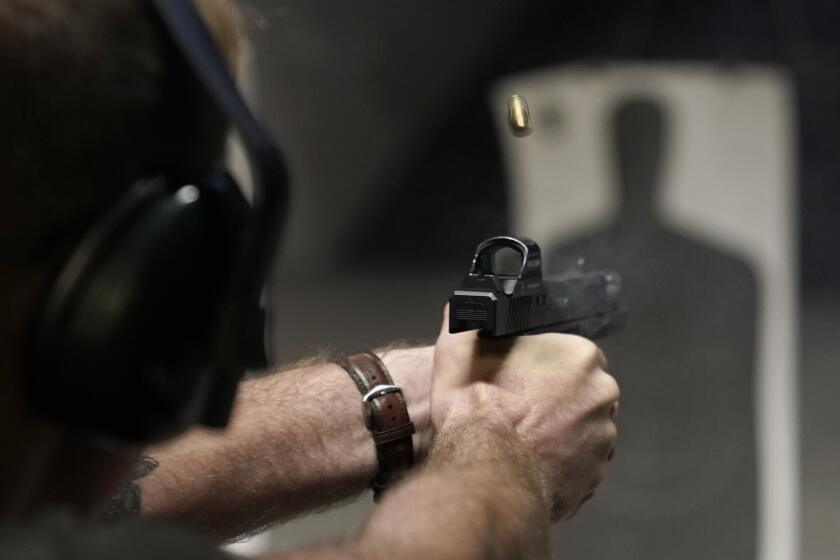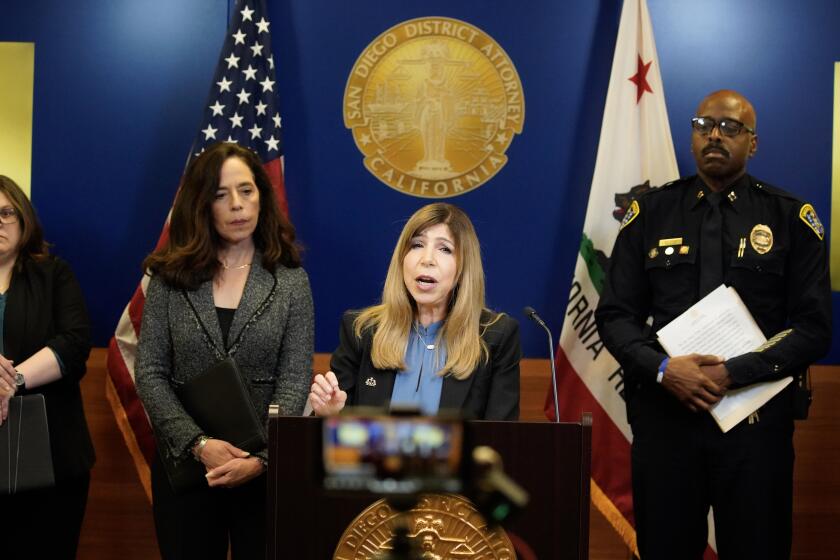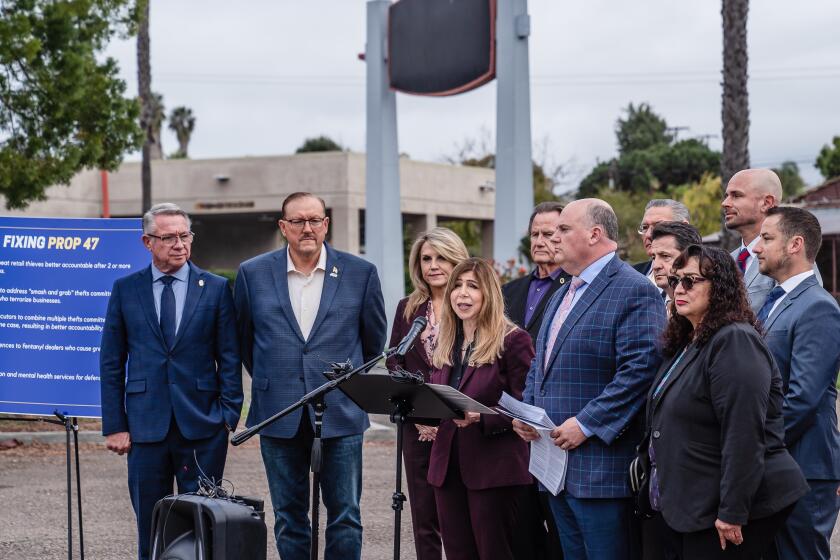San Diego council committee unanimously approves ordinances targeting surveillance technology

The vote is a win for advocates upset to learn the city had cameras in 3,000 streetlights
San Diegans are closer to getting a say in how they might be watched.
A City Council committee on Wednesday unanimously approved two proposed ordinances geared at governing surveillance technologies in the city, an action sparked by sustained pushback from activists and others who were surprised and upset last year when it was revealed that San Diego had quietly installed cameras on streetlights throughout the city.
“Today’s action is a promising step that will protect both the safety and civil liberties of our communities,” Councilwoman Monica Montgomery said before she and three fellow councilmembers on the Public Safety & Livable Neighborhoods Committee voted to support the proposals.
One of the two proposed changes to city law would set up a process to govern all surveillance technologies in the city, current and future. The other would create an “privacy advisory commission” of technical experts — given the complexity and scale of the topic — and community members to review surveillance proposals and provide advice and assistance to the city.
The proposed ordinances still must make their way to the City Council — when that will happen remains unclear — but for advocates, Wednesday’s vote marked a victory.
Lilly Irani, an associate professor at UC San Diego who specializes in the ethics of technology, called the vote “a win for better governance in the long term.”
Irani helped draft the ordinances and assisted the organized opposition dubbed the TRUST San Diego coalition, which focuses on responsible surveillance in the region. The coalition was born out of concerns about one specific technology — so-called smart streetlights — and ultimately landed a seat at the table to draft the proposals.
“Without Councilmember Monica Montgomery championing this... there would be no table,” Irani said.
The proposals draw a direct line to San Diego’s installation of Smart Streetlights throughout the city. Initially sold to the public in 2016 as cost- and energy-saving lights, the smart streetlights also included high-tech sensors equipped with cameras, microphones and other technology.
The fact that the lights had cameras didn’t really enter the public consciousness until last year.
The sensors capture a variety of information about, for example, pedestrian and vehicle movements, parking availability, temperature and humidity. Images are turned into data. The city runs the Smart Streetlights Program through its Sustainability Department.
Initially, not even San Diego police knew the cameras existed on the lights. Now they have limited access to the footage. The cameras are not monitored in real time; police look at the images after an incident. Those after-the-fact peeks have often provided critical investigative information.
They have helped lead to arrests in several cases, including homicides such as the shooting last year at a Church’s Chicken restaurant in Otay Mesa that killed one employee and injured two others. At least twice, the cameras have captured images of encounters where police have fatally shot suspects.
San Diego police have hailed the cameras as a game-changer for investigating serious or violent crimes.
When people learned last year that there were thousands of streetlight cameras around San Diego, some community advocates feared that civil liberties could be abused or that communities of color might be targeted for surveillance. Others raised concerns about how the raw data from the sensors could be used.
Related:
San Diego has more than 3,000 cameras on streetlights. Are all neighborhoods treated equally?
Some demanded oversight. In January, city staffers brought to the Public Safety & Livable Neighborhoods committee a potential policy to govern the Smart Streetlights program.
But the committee said no. It wanted something more overarching, something that would address all types of surveillance technologies — including drones and facial recognition.
The result was the proposed ordinances introduced Wednesday. They have a special name: Transparent and Responsible Use of Surveillance Technology — or TRUST.
Montgomery, who chairs the committee that voted Wednesday, said during the meeting that she understands the positives behind police access to the streetlight cameras, and that “proper use” can help with public safety.
“But today’s action is about transparency,” she said, “and without oversight, these powerful technologies can be misused and abused.”
“We see the benefits of the lights for crime solving purposes, but the city has not been honest in the past about how certain departments are using these lights and for what reason,” Montgomery said. “So this is a civil liberties issue.”
One of the ordinances would set up the rules for the city to acquire and use surveillance equipment and technology, according to a city staff report. It would also create oversight, auditing and reporting requirements. It puts into place policies for data collection and sharing, as well as access, protection and retention. It also calls for public access to records.
If the new rules are approved, the City Council would have to give the OK before the city acquires any additional surveillance technology.
The second ordinance would create the privacy commission which would review any surveillance technology before the city buys or otherwise acquires it. The group also would review existing surveillance uses in the city and look for potential civil rights violations. It would also analyze whether the city’s use of technology might be discriminatory.
“The ordinances will ensure the public has the ability to weigh in on the costs and benefits of new surveillance technology, including the impact on civil liberties before the city obtained it,” Montgomery said.
Councilwoman Vivian Moreno, a member of the Public Safety & Liveable Neighborhoods Committee, said the idea is to “correct many of the privacy and civil liberty failings in the city.”
“The deployment of streetlight camera technology with no discussion of privacy or civil liberties until they were already in use is the clearest example showing the need for today’s action,” she said.
As of January, San Diego had more than 3,000 smart streetlights installed throughout the city.
San Diego has previously faced criticism over its handling of some technologies. In 2016, a gunshot detection system known as ShotSpotter, was installed in four southeastern San Diego neighborhoods with little to no community input on the matter. Residents raised several questions, including whether it would lead to over-policing.
Irani said the working group looked to other jurisdictions when crafting the proposed ordinances including Oakland and Seattle. She also noted that the privacy committee would bring together subject-matter experts with community stakeholders who are experts in what is happening on the ground where they live.
Montgomery’s office issued a statement Wednesday saying that it sees the ordinance and the privacy commission as key pieces of what the councilwoman as dubbed her “Road Map to Reimagining Policing and Public Safety.”
The latest news, as soon as it breaks.
Get our email alerts straight to your inbox.
You may occasionally receive promotional content from the San Diego Union-Tribune.




